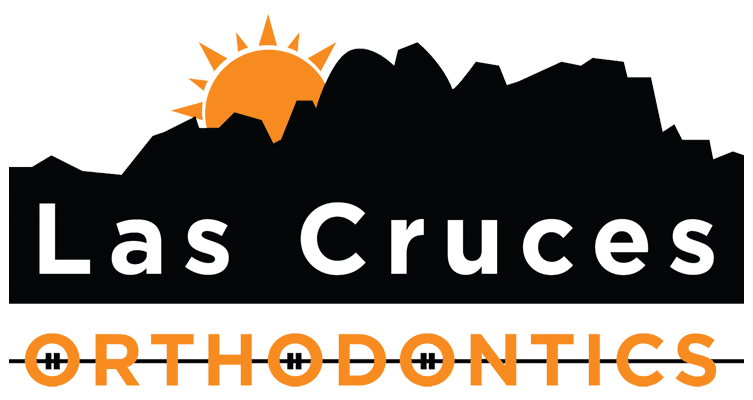Whether you wear conventional wire braces or clear aligners, you will need to wear a retainer once your treatment is over. This custom-made appliance is specially created to maintain your newly straightened teeth.
There are several different kinds of retainers available. Your orthodontist will determine the best choice for you based on the original condition of your teeth, the way your teeth grow, and any potential risk of treatment failure.
What Causes Teeth to Move?
There’s always a risk of teeth shifting back due to a variety of factors, which is why it’s essential for patients who wore braces to make a habit of wearing a retainer. Any of these concerns could have an effect on the position of the teeth.
- Everyday usage: Among the most common culprits is general wear and tear due to everyday activities, like eating, biting, chewing, and talking. All of these cause small bursts of pressure that gradually cause the teeth to shift.
- Tooth loss: If you need a tooth extraction or lose one, you’ll have an empty space that encourages neighboring teeth to shift. This can dramatically affect their position.
- Gum disease: One of the hallmark symptoms of gum disease is inflammation, which causes the affected tissue to expand. The fibrous ligaments that hold your teeth to the socket loosen as a result, causing your teeth to move in response.
- Teeth grinding: Grinding puts pressure on your teeth. As the molars in particular are exposed to this force, the teeth start to shift gradually. This slowly strains neighboring teeth, causing those to move and leading to soreness.
- Natural aging: Teeth naturally migrate as people age. This “drifting” occurs when the teeth gradually shift forward. Over time, it can cause issues like new misalignment or crowding.
How Long Do You Need to Wear Retainers?
Patients are usually advised to wear the retainer every night for the first year after braces treatment before graduating to several nights per week on a permanent basis. This is the most effective way to retain the results of your treatment.
While it’s recommended to wear your retainers on some sort of consistent schedule forever, it’s especially critical to do so in the immediate aftermath of your treatment. Since all patients have different needs, you can expect your orthodontist to devise a plan that is most beneficial for your teeth. Sticking with this plan can help you avoid relapse and the possibility of wearing braces again.
What Kind of Retainers Are Available?
Retainers are available in a range of styles and modalities. Your orthodontist will select the right style based primarily on your braces treatment. However, your lifestyle and preferences also play a role.
Permanent Retainers
Also known as fixed or bonded retainers, permanent retainers are similar to conventional wire braces. Instead of being placed on the front of your teeth, though, they’re situated on the inside. Unlike braces, they don’t have brackets. They consist strictly of a slim metallic wire that keeps your teeth in place. This wire is cemented with a bonding material and cured with light.
There’s no bulky or uncomfortable sensation, nor is there a risk of cutting yourself. Patients sometimes worry that a fixed retainer will affect their speech or ability to eat, but there aren’t any side effects involved. It may take a little time to get used to the feel of the wire, but after a while you won’t even remember it’s there.
Removable Retainers
Removable retainers are typically made either with clear acrylic or metal wire. They snap out easily and are simple to clean. Generally, orthodontists advise that patients wear their removable retainers overnight to maintain treatment results. This option is typically recommended for patients who wore clear aligners, and whose risk of experiencing treatment failure are minimal.
This option is also popular because the wearer can remove them at any time. They may disrupt speech slightly when worn for the first time, but gradually you’ll grow accustomed to the way that they feel. Among the varieties available are:
Hawley Retainer
Created in the early 20th century by Dr. Charles Hawley, the Hawley retainer was the first of its kind: a device that held teeth in place, but that could be removed at the wearer’s convenience. This variety consists of metal wiring and a solid acrylic plate. The wires wrap around the teeth, while the plate supports them and sits comfortably on the roof of the mouth.
Brushing it with warm water is the easiest way to maintain your Hawley retainer. You can soak it a couple of times each month in a mixture of water and baking soda for a deeper clean. The beneficial device is custom-made to fit your mouth perfectly, offering durability and a lifespan of about a decade.
Clear Retainer
Also known as an Essix retainer, this form differs from the Hawley in that it’s made with translucent materials. This inconspicuous option is often favored by people who wore clear aligners to straighten their teeth because it’s similar in appearance and function. It’s easy to remove and put back in place, and should be rinsed before reinsertion to keep it clean.
The only downside to wearing clear aligners is that your risk of developing plaque increases slightly. However, practicing proper oral hygiene can prevent this. Be sure to brush at least twice a day, floss regularly, and see your dentist for exams and cleanings.
Retain Your Brilliant Smile at Las Cruces Orthodontics
Whether you’re interested in getting braces or you’re ready to graduate to a retainer, you can trust in the team at Las Cruces Orthodontics every step of the way. Offering metal braces and clear aligners, we’re committed to helping you find the right solution based on your needs and preferences. We also offer a variety of retainers, including permanent, Hawley, and Essix. Visit the website for more information, or call 575-640-3367 to schedule an appointment.

